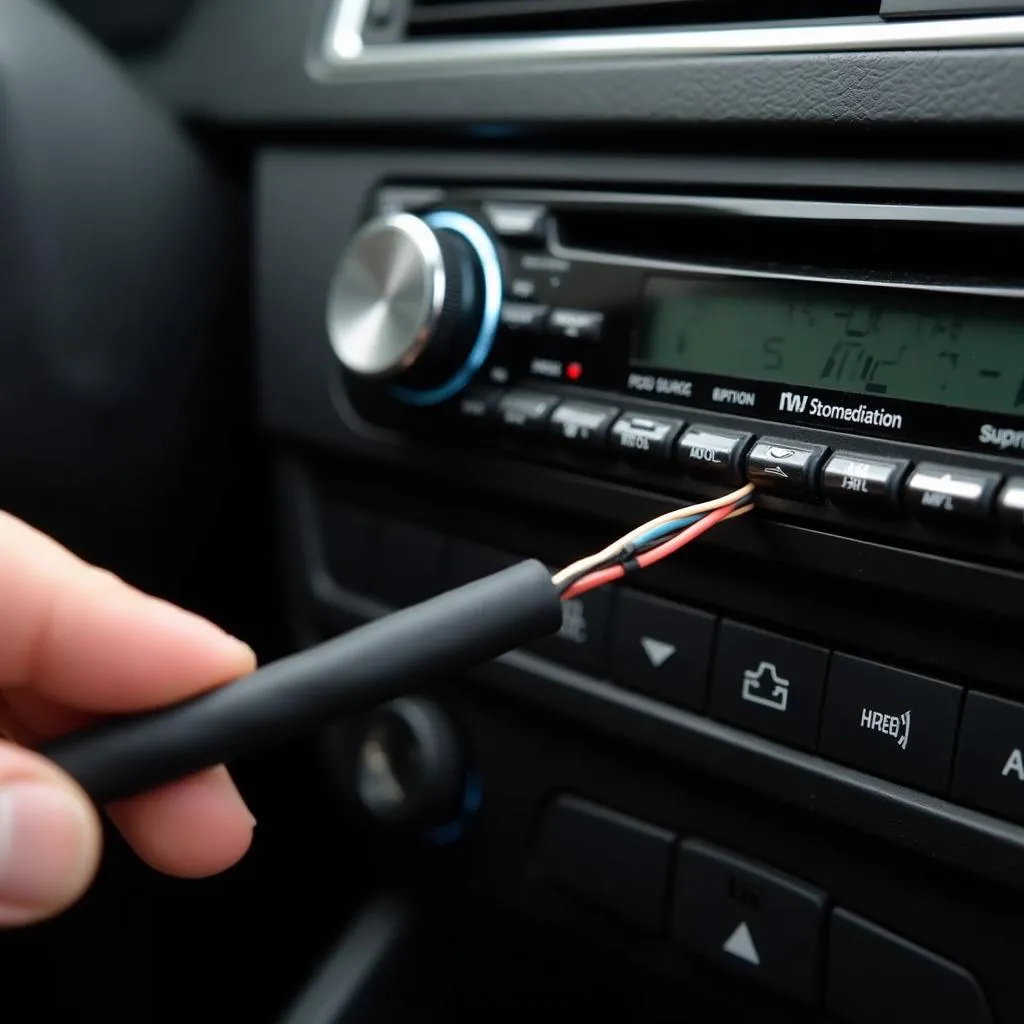Experiencing trouble with your Ford Explorer’s anti-theft system? It’s a common issue, and while it’s designed to keep your vehicle safe, it can be a real headache when it malfunctions. This comprehensive guide will walk you through the potential causes, symptoms, and solutions for bypassing your Ford Explorer’s anti-theft system.
Understanding Anti-Theft Systems in Ford Explorers
Before diving into solutions, let’s understand how these systems work. Ford Explorers, like many modern vehicles, use a system called Passive Anti-Theft System (PATS). It utilizes a transponder chip embedded in your key. When you insert your key or are near the vehicle with a key fob, the system communicates with the chip. If the correct signal isn’t received, the vehicle’s computer assumes a theft attempt and immobilizes the engine.
Common Causes of Anti-Theft System Issues
Several issues can trigger your Ford Explorer’s anti-theft system. These include:
- Weak or Dead Key Fob Battery: A dead battery in your key fob disrupts communication with your vehicle.
- Faulty Ignition Cylinder: The ignition cylinder reads the chip in your key. A malfunctioning cylinder can lead to miscommunication.
- Damaged Wiring: Broken or corroded wiring in the ignition system can disrupt the signal transmission.
- Malfunctioning Body Control Module (BCM): The BCM is the brain of your vehicle’s electrical system, including the anti-theft system. A failing BCM can cause a range of issues.
Identifying Anti-Theft System Problems: Common Symptoms
Recognizing the signs of an anti-theft system malfunction is the first step towards a solution. Look out for:
- Rapid Flashing Security Light: If your dashboard security light is blinking rapidly, it’s often the first indication of an anti-theft issue.
- Engine Cranks but Won’t Start: This is a classic symptom. Your engine may turn over, but it won’t actually fire up.
- Key Stuck in Ignition: In some cases, the anti-theft system may prevent you from removing your key from the ignition.
Essential Tools for Diagnosing and Addressing the Issue
To effectively troubleshoot and potentially bypass your Ford Explorer’s anti-theft system, you might need a few tools:
- Code Reader (OBD-II Scanner): This tool allows you to read and interpret diagnostic trouble codes stored in your vehicle’s computer, helping pinpoint the problem.
- Multimeter: A multimeter can test the battery in your key fob and check for continuity in the wiring.
- Basic Hand Tools: Screwdrivers, wrenches, and pliers might be needed for accessing certain components.
Steps for Bypassing the Anti-Theft System
Important Note: Bypassing your vehicle’s anti-theft system should be considered a temporary solution or a last resort. It’s crucial to address the root cause of the issue to restore full security functionality.
Disclaimer: Cardiagtech strongly advises against attempting to bypass the anti-theft system without proper knowledge and expertise. Improper handling can lead to damage to your vehicle’s electrical system or create further issues.
-
Check Your Key Fob Battery: Start with the simplest solution. Replace the battery in your key fob and try starting the vehicle again.
-
Inspect the Ignition Cylinder: Visually examine the ignition cylinder for any signs of damage or debris. If you suspect a problem, consult a qualified mechanic or automotive locksmith.
-
Use a Code Reader: Connect a code reader to your vehicle’s OBD-II port (usually located under the dashboard on the driver’s side). Read any stored diagnostic trouble codes related to the anti-theft system. Research these codes online or consult a repair manual to understand their meaning.
-
Consult a Professional: If you’ve exhausted basic troubleshooting steps, it’s time to call in the experts. A qualified automotive locksmith or mechanic specializing in automotive electronics can diagnose the issue accurately and provide the necessary repairs.
Frequently Asked Questions About Anti-Theft Systems
Q: Can I drive my Ford Explorer with the security light flashing?
A: While your vehicle might start and run with the security light flashing, it indicates a potential issue with the anti-theft system. It’s crucial to address the underlying problem to restore full security functionality and prevent future issues.
Q: Can I disable the anti-theft system on my Ford Explorer myself?
A: Disabling the anti-theft system is strongly discouraged. It compromises the security of your vehicle and may not be legal in all areas. It’s best to address the root cause of the problem with the help of a qualified professional.
Q: My key fob is working, but the anti-theft system is still active. What could be wrong?
A: The issue might stem from other components like the ignition cylinder, wiring, or the body control module (BCM). A diagnostic scan can help pinpoint the faulty component.
Cardiagtech: Your Partner in Automotive Diagnostics and Repair
Navigating the complexities of modern vehicle electronics can be challenging. At CARDIAGTECH, we specialize in providing advanced diagnostic tools, software, and expertise to help you get back on the road. If you’re experiencing issues with your Ford Explorer’s anti-theft system or any other electronic component, our team of experts is here to assist you. Contact us today for professional diagnostic services, remote programming solutions, and comprehensive repair guidance.
Conclusion
Dealing with a malfunctioning anti-theft system can be a frustrating experience. Remember, while temporary bypass methods might seem appealing, addressing the root cause is essential for your vehicle’s security and your peace of mind. By understanding the common causes, symptoms, and seeking expert help when needed, you can overcome anti-theft system issues and get back to enjoying the open road in your Ford Explorer.

